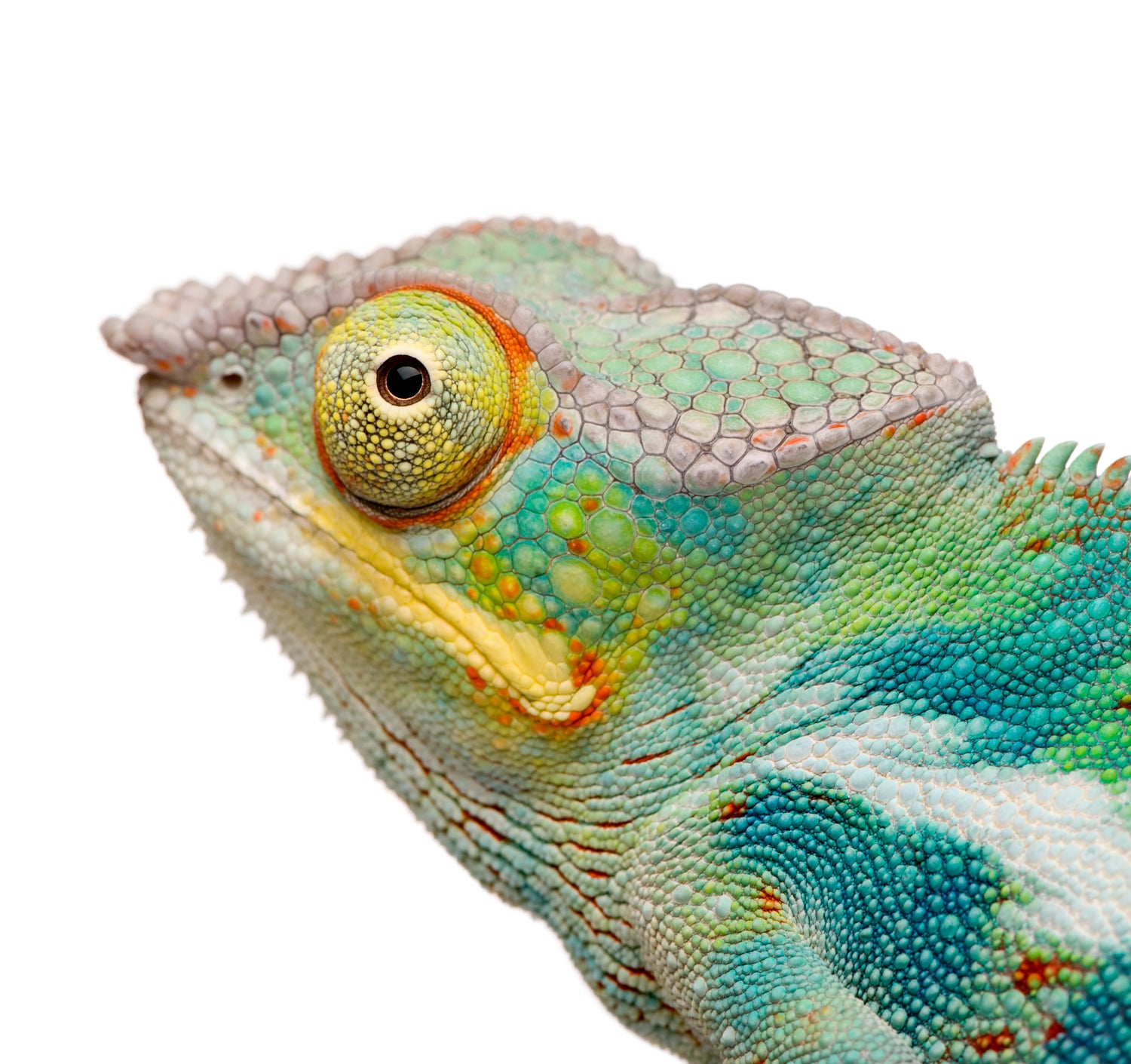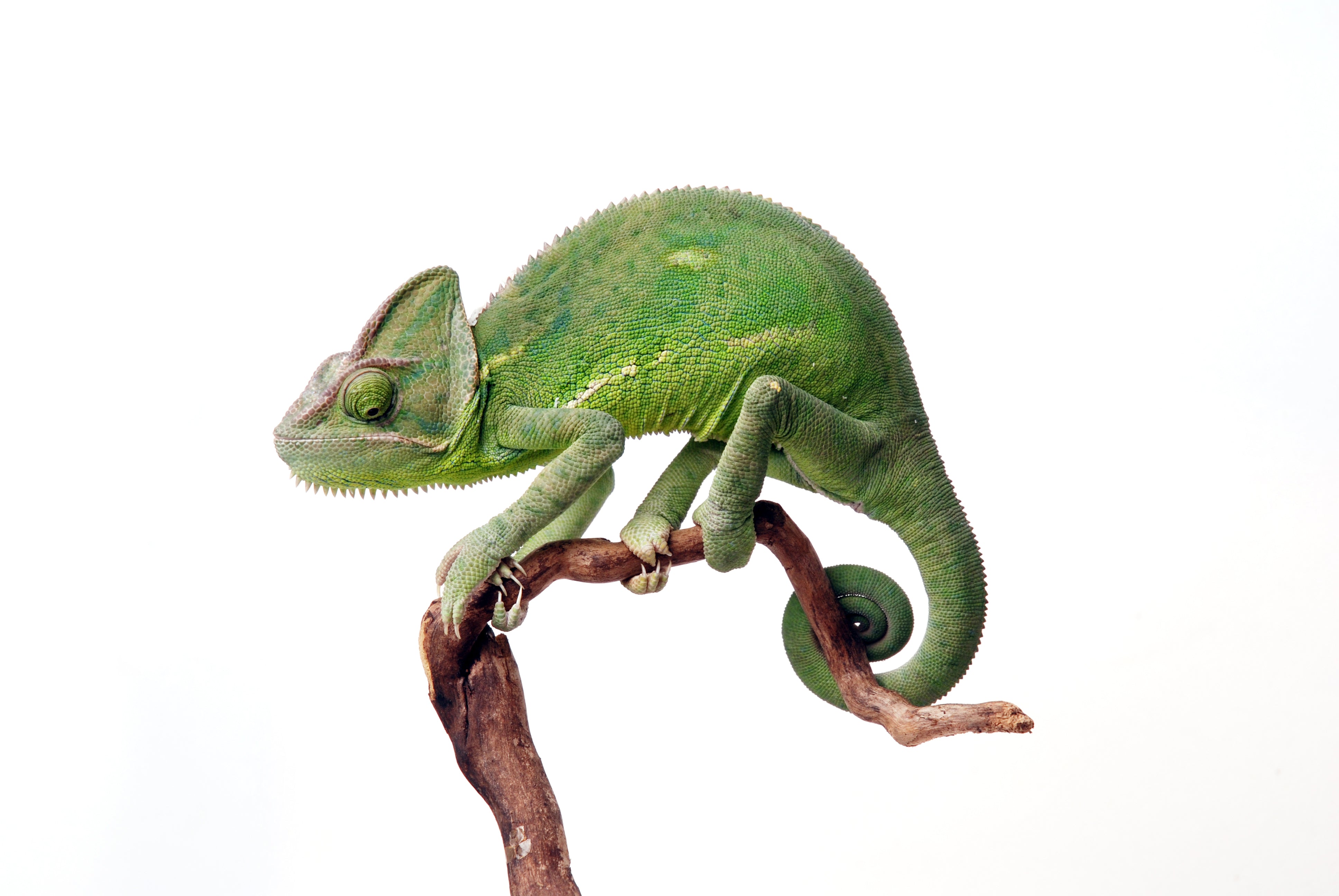Your panther chameleon is an insectivore, the choice of insects that your chameleon eats is decided by what their owner decides to offer since they are opportunist hunters in the wild they will decide what to eat by what is presented to them. Many insects should be offered as a staple and some that should be offered as a treat. Staple insects can be offered to your chameleon every feeding, but treat insects should only be offered once per week at most.
How Often To Feed Your Panther Chameleon
Hatchling/babies (0-1 months) chameleons require multiple feedings per day, with suitably sized insects such as extra small dubia roaches, fruit flies, black soldier fly larvae or small hornworms.
Juveniles (1-7 months) need to be fed 4-5 times per week with slightly larger insects more appropriate to their size, panther chameleons grow quickly so you should weigh them often and adjust their feeders accordingly.
Adults (7+ months) need to be fed every other day with larger insects, this can be anything from 30-40 dubia roaches per week spaced apart, less if larger prey items are used, or more if smaller prey items are used.
See below for the best insects that you should offer your panther chameleon:
Feeder Insects for Your Panther Chameleon
There are many feeder insects available for you to choose from when selecting the best diet for your panther chameleon. We have selected the best ones available and outlined the portion of your chameleon's diet that each can make up.
- Dubia roaches (Blaptica dubia)
Dubia Roaches are an excellent staple feeder for your panther chameleon, they are inexpensive, easy to keep, don't smell, don't die easily, also when bought from a trusted vendor they have an almost non-existent chance of passing on parasites to your chameleon. They are also very easy to gutload and can constitute 40-45% of your panther chameleon's total diet. (can be substituted for discoid roaches where dubia are not available)
- Hissing Cockroaches (Gromphadorhina portentosa)
Hissing cockroaches can be used when they are smaller and make a great staple, nutritional and easy to gut-load these can make up 40% of your chameleon's diet.
- Crickets (Acheta domestica)
Crickets are well rounded when it comes to nutrition are readily available and inexpensive, the drawbacks are that they can die easily and have been known to pass parasites onto reptiles. However they are easy to gutload and they can make up 35-40% of your chameleons total diet.
- Hornworms (Manduca quinquemaculata)
Hornworms are a good staple that is very high in nutrition, with plenty of calcium, protein, and vitamins, they also contain a lot of hydration which is great but overfeeding can cause diarrhea through overhydration. They are relatively easy to gut-load and can constitute up to about 20% of your chameleons total diet.
- Black soldier fly larvae Aka Nutrigrubs (Hermetica illucens)
BSFL, also known as Nutrigrubs are an excellent staple that is very high in calcium. The only drawback are they can be difficult to gut-load and due to their small size it can be hard for adult chameleons to eat enough of them, but if you can get your cham to eat then great. They can constitute up to around 30% of a panther chameleons total diet.
- Silkworms (Bombyx mori)
Silkworms are high in calcium and also contain a mild analgesic that can be useful when treating a sick chameleon. They can be difficult to gut-load being sensitive to certain foods but they can make up 35-40% of a chameleon's total diet.
- Superworms (Zophobas morio)
Superworms are a nutritionally decent addition to your panther chameleon's diet, readily available and inexpensive they are easy to gut-load. However, they do have a slightly high fat content so should only make up about 20% of your panther chameleon's diet.


- Mealworms (Tenebrio molitor)
Similar to superworms but generally lower in nutrition, they do not make a great staple. They are not as high in fat as superworms but they can be difficult for panther chameleons to digest, they are easy to gut-load but should only make up about 10% of your chameleon's diet.
- Fruit Flies (Drosophila sp.)
Good nutrition wise but just very very tiny, it would be difficult to use as any kind of staple for an adult panther chameleon but they can be used for baby chams and can make up 30-35% of their diet. (If you can get them to eat enough)
- Butterworms (Chilecomadia moorei)
Butterworms are a nutritional feeder insects, they are high in fat but are great as a treat and can be difficult to gut-load so should only make up about 20% of your panther chameleon's total diet.
- Waxworms (Galleria mellonela)
Waxworms are similar to butterworms but even higher in fat, these are not commonly used for panther chameleons but can be used occasionally. Difficult to gut-load but can make up about 3-5% of your chameleon's diet.
Gut-loading your feeder insects
Some chameleons may be interested in eating the occasional vegetable; you can offer these to your pet to supplement their diet and keep them healthy. But your chameleon probably isn't interested in eating their vegetables. But you will need to add nutrition to their diet by gut loading your feeder insects with fresh salad items that are safe for reptiles for a few days before feeding them to your chameleon or with commercially prepared foods:
Supplementing Your Feeder Insects
You should also ensure that your feeder insects are appropriately supplemented with calcium, calcium plus D3, and also a multivitamin powder. These should each be lightly dusted on your feeders once per week. These are some great suggestions for supplements to use:
Hydrating Your Panther Chameleon
- Water Dish Panther chameleons can drink out of a dish, this may take them time to get used to put placing a dish of water in their enclosure daily may tempt them to drink from the dish.
- Hand Misting – Using a spray bottle, you can mist your panther chameleon's enclosure. A pressure pump can be useful for this as hand misting all the time can get tiresome.
- Dripper - You can make a hand made ripped, it can be simple to make, just make a hole in a plastic cup and fill with water then place this on top of the enclosure and let it drip.



2 comments
Reptile Supply
Hi Paula — If this article is not helpful for answering your question, please read through our panther chameleon care sheet for more information: https://reptilesupply.com/blogs/care-sheets/how-to-care-for-your-panther-chameleon
Paula MacDonald
My son just got me a rainbow Chamaeleon and I’m not sure how to take care of it. I get some crickets but they died most of them anyway. What is the best food for them.
Leave a comment
All comments are moderated before being published.
This site is protected by hCaptcha and the hCaptcha Privacy Policy and Terms of Service apply.